Safety is paramount when it comes to winch out towing, a critical service that aids vehicles trapped in challenging situations. Whether dealing with off-road adventures, muddy terrains, or urban mishaps, adhering to best practices ensures not only the success of the towing operation but also the well-being of everyone involved. There are a few key aspects of “Safety First: Winch Out Towing Best Practices that we at KB Towing Service would like to share today.
What are the Best Practices for a Winch Out?
Assess the Situation: Before initiating a winch out towing operation, it’s crucial to thoroughly assess the situation. Identify potential hazards, such as unstable terrain or nearby obstacles. Understanding the conditions allows for better planning and implementation of safety measures.
Secure the Area: Prioritize the safety of all individuals present by securing the area. Set up visible warnings, such as cones or reflective markers, to alert other drivers. If possible, cordon off the immediate vicinity to prevent unauthorized access. Clear the area of bystanders to avoid any accidents during the towing process.
Personal Protective Equipment (PPE): All personnel involved in the winch out towing operation should wear appropriate personal protective equipment. This includes high-visibility vests, gloves, and, if necessary, helmets. PPE not only enhances visibility but also provides a layer of protection against potential risks.
Communication Protocols: Establish clear communication protocols before commencing the winch out towing process. Ensure that all team members understand the signals and commands to be used during the operation. Effective communication reduces the risk of misunderstandings and enhances overall coordination.
Stabilize the Vehicle: Before winching begins, stabilize the stranded vehicle to prevent unintended movements. Use wheel chocks or blocks to secure the wheels and ensure the vehicle remains stationary throughout the towing process. This step is vital in avoiding accidents caused by sudden shifts or rolls.
Proper Anchor Points: Identify and use suitable anchor points for the winching operation. Ensure that the anchor points are robust and securely anchored to provide the necessary stability. Using unreliable or weak anchor points can lead to equipment failure and compromise the safety of the operation.
Regular Equipment Inspection: Regularly inspect and maintain winching equipment to ensure it functions correctly. Check cables, hooks, and winch mechanisms for signs of wear or damage. Faulty equipment poses a significant safety risk and may result in accidents during the towing process.
Emergency Response Plan: Have a well-defined emergency response plan in place. This should include procedures for responding to unexpected events, such as equipment failure or adverse weather conditions. Ensuring that all team members are aware of the emergency plan enhances the overall safety of the operation.
Towing & Roadside Assistance Services & More in Rowlett, Garland, Mesquite, Rockwall, Wylie, Sachse & Greater Dallas, Texas
Prioritizing safety through comprehensive assessments, proper equipment use, and effective communication is the foundation of successful winch out towing operations. By adhering to these best practices, towing service providers can not only ensure the efficient resolution of challenging situations but also safeguard the well-being of their team and those in the vicinity. Remember, safety is not just a practice – it’s a mindset that should guide every step of the winch out towing process. For superior towing services in Dallas, TX and surrounding areas, call KB Towing Service and let us take care of you!




